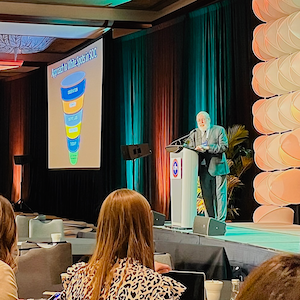Article
SDPA 2022 Presentation Highlights: Dermatologic Conditions with Skin Depigmentation Resembling Vitiligo
Author(s):
In one of his SDPA 2022 presentations, Dr. Rosen spoke on different dermatological conditions with vitiligo-like presentations.

In one of his presentations at the SDPA 20th Annual Fall Dermatology Conference, Ted Rosen, MD, spoke on the topic of skin conditions with presentations similar to but distinct from vitiligo.
Rosen is known for his work as a Professor and Vice-Chair of Dermatology at Baylor College of Medicine. His presentation explored some of the many reasons why skin may assume a pathologic white tone besides vitiligo.
An example of his coverage of the topics is that of tinea versicolor, a skin condition often misdiagnosed as vitiligo due to its presentation of white spots.
“So tinea versicolor,” Rosen said. “What does versicolor mean? It means many-colored, so remember, today versicolor can cause, especially in skin of color…can cause lighter spots. It can cause darker spots. And in Caucasian skin, it often has that orangey, scarred response.”
He went on to point out some of the similarities with vitiligo that tinea versicolor may have.
"An important point to note is the tinea versicolor can occur on the face, especially in adolescents and children,” he explained.
Rosen went in depth into a discussion of both more mundane and rarer skin diseases and disorders. He described appropriate diagnostic maneuvers in patients with white skin spots, as well as therapeutic interventions for the various causes.
He also brought up the fact that some rarer conditions resembling vitiligo due to their presentations may, in fact, be due common conditions such as shingles or atopic dermatitis. It may even be due to exposures to things during childhood such as arsenic in rural well water.
“Here's where arsenic is in rural well water: Taiwan, Vietnam, Thailand, Bangladesh, Mongolia, some parts of China, in Nepal, okay?” Rosen said. “Hungary and Romania. Certain parts of Chile and Argentina. Mexico, rural Mexico, and the western United States.”
Rosen added that an individual patient’s background is important to assess due to exposures to things like arsenic in well water, a common occurrence in childhood for many in these rural regions. Background, he explained more broadly, can help to ascertain the condition.
View more on SDPA 2022 updates and conference coverage.





